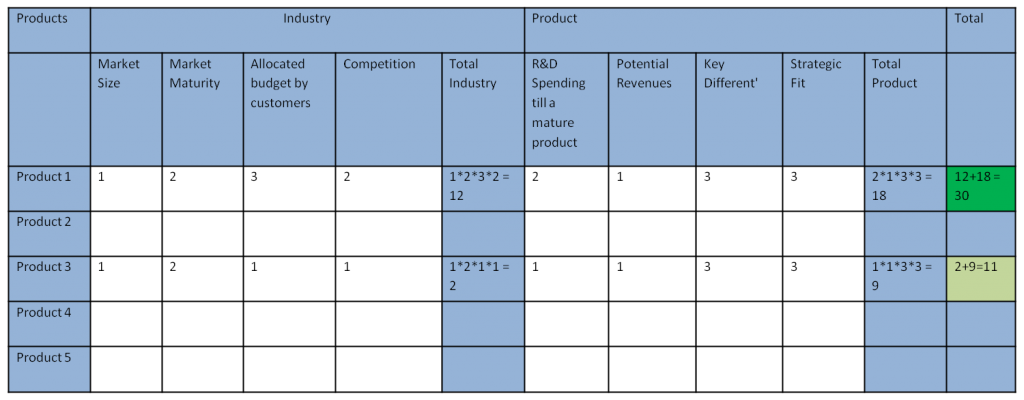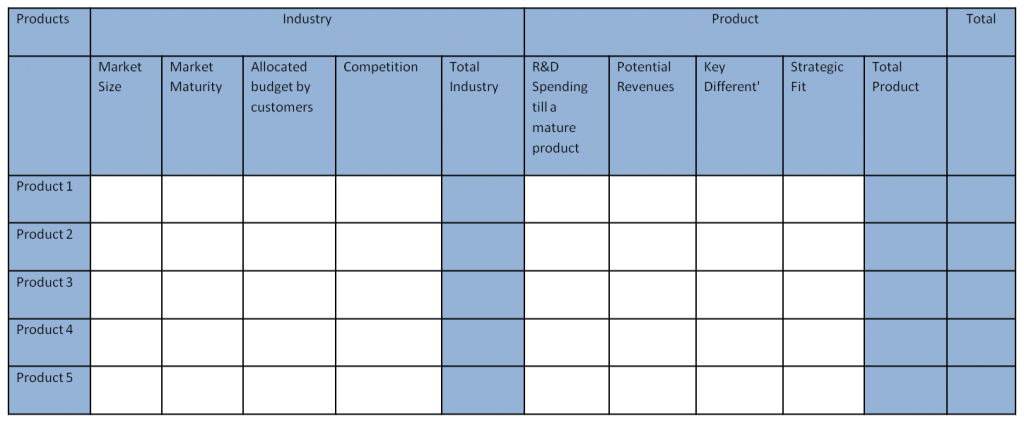By Rivi Aspler
Have you ever thought of taking the financial method of Zero Based Budgeting and applying it to products portfolio budgeting decisions?
and applying it to products portfolio budgeting decisions?
Privileged with the opportunity to rethink my company’s products portfolio, I recently took part in such a process and would like to share with you the method.
Wikipedia defines Zero-Based Budgeting as:
A financial method of budgeting in which all expenses (of a company, a project, etc.) must be justified for each new period. Zero-based budgeting starts from a “zero base”; while every function within an organization is analyzed for its needs and costs. Budgets are then built around what is needed for the upcoming period, regardless of whether the budget is higher or lower than the previous one.
When you come to think of it, budgeting different functions of an organization, can be easily applied to products-budgeting. Decisions are logically the same. Products are very much like a live creature in a dynamic ecological environment. If you feed products with food (R&D power), they will grow and prosper (assuming that you are defining a good product ;-)). If you starve products; they will sadly become irrelevant in time.
So, how do you apply zero based budgeting to products-budgeting?
Firstly, you start by listing the ‘functions’ that require investment, i.e. the products or modules per product that you may want to invest in. It’s easy to list those on the y axis of an excel spreadsheet (bear with me; we will use the X axis momentarily).
Now, list the parameters (on the X axis) by which you are going to analyze the products. I would recommend the following:
Industry: (1) Market size, (2) Market Maturity, (3) Allocated budget by customers and (4) Competition
Product: (1) R&D Spending till a mature product, (2) Potential Revenues, (3) Key Differentiators and (4) Strategic Fit
Now that we have got the template set. We can go through the analysis:
- Insert a value between 1 and 3 into each of the grid-cells.
- Multiply the values of each cell by their row-neighbors cell-values. Do that separately for each category.
- Sum-up the categories results. You will get a clear order of the products by their financial potential.
 We now know that product 1 should get, by far, more resources than product 3. Whether these resources are R&D people or M&A dollars, that’s another question (Buy/Build/Partner).
We now know that product 1 should get, by far, more resources than product 3. Whether these resources are R&D people or M&A dollars, that’s another question (Buy/Build/Partner).
Now that the main flow is described, I would like to note some things that one should consider when going through such a process:
- Considering the importance of such a discussion, the tool should be shared with several opinion leaders of the organization and the results should be an average of all stakeholders-grades.
- Do these stake holders represent different opinions or is there a known consensus? The tool will be most valuable when you are questioning your roadmap decisions or when people have heterogeneous opinions.
- Make sure that everyone speaks the same language when filling in values into the table. Clearly specify which verbal value each numeric value stands for. Just as an example, it should be clear to people that ‘3’ in the case of “Allocated budget by customers” means ‘4 M/Year’ as opposed to ‘Less than 0.5 M/Year’ in the case of ‘1’.
- If you have more parameters in either of the categories (industry vs. product), it means that you consider one of these categories to be more important than the other
Rivi
Tweet this: Using Zero Based Budgeting as a tool for Product Strategy http://wp.me/pXBON-3yD #prodmgmt #strategy
